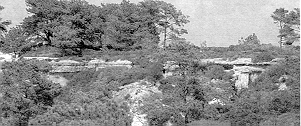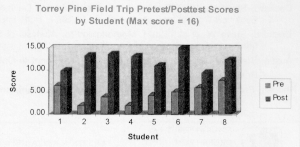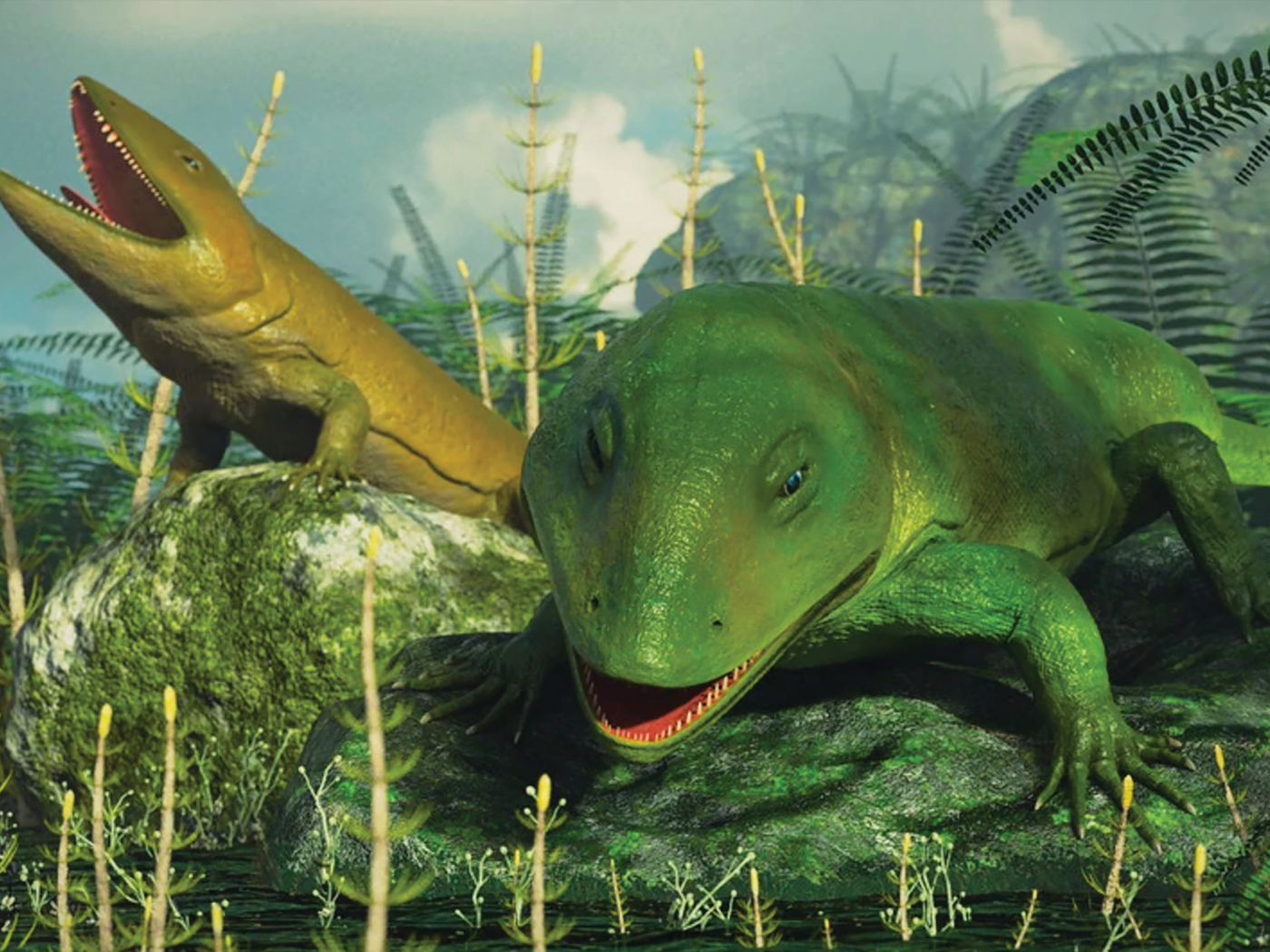Most teachers realize that textbook-centered instruction limits learning. Despite this knowledge, educational researcher Robert Yager reports that "over 90% of all science teachers use a textbook 95% of the time: hence, the textbook becomes the course outline, the framework, the parameters for the students' experience, testing, and a worldview of science." He further states that "there is virtually no evidence of science being learned by direct experience" (p. 578, 1983). [1] This apparent mismatch between educators' realizations and their use of textbooks sounds a clear call for change. Thus, attempting to increase learning, some educators apply a hands-on and minds-on approach through learning activities and laboratory experiences. While this may increase learning, it does not address the question of what is worth learning. It is our contention that studying God's creation through a well-planned field trip can lead toward the much needed change which will answer this question. This shift in focus would be toward a Christ-centered creationist perspective rather than a "worldview of science." [2] Since the natural mind is "always learning but never able to come to the knowledge of the truth" (II Timothy 3:7) hands-on, minds-on learning is incomplete. The authors believe that coming to the knowledge of the truth involves a third component which we will call "hearts-on." [3,ii]
To study such a hands-on, minds-on, hearts-on learning experience, the Science Education Department planned and implemented a field trip to the Torrey Pines State Reserve as part of a summer teacher workshop. This article summarizes the experience.
A model for the development and implementation of field trips suggests that preparing students ahead of time would help them concentrate on their assignments rather than the novelty of the setting. To compensate for the novelty of Torrey Pines State Reserve, we prepared a scrapbook and discussed the field trip plans with the participants prior to the day of the event. This assisted the participants in dealing with the psychological, geographical, and cognitive factors of novelty space (Orion, 326).
Planning also included several pre-visits to the site to ensure that the field trip leaders were familiar with the area and to identify what was worth learning during a one-day field trip. The ICR scientific creationist tenets containing elements related to the concepts to be presented during the field trip were selected as the starting point and unifying theme for planning the field trip. [4,vii,viii] These were incorporated into the field trip manual. The leaders developed activities to give the participants practice in applying a hands-on, minds-on, hearts-on approach to the tenets and wrote a pretest/posttest in an attempt to measure the learning that occurred.
Other aspects of the planning included the development of analogies, discussion of logistics, and the amount of time to be spent at each station. Analogies were used to relate attributes from nature to our spiritual walk with the Creator.
The pretest was administered on Monday at the beginning of the workshop. The Wednesday field trip focused on several specific elements of God's creation such as the Torrey Pine, Yucca schidegera, and the various sedimentary rock layers. These items provided the students with direct learning experiences related to the selected tenets of creationism.
The Torrey Pine was used to illustrate tenet number seven which states that life has "somehow been impaired since the completion of creation, so that imperfections in structure, disease, aging, extinctions, and other such phenomena are the result of 'negative' changes in properties and processes occurring in an originally perfect created order." Imperfections were shown by observing the Torrey Pine in various states of decay.

Students noted many signs of massive bark beetle damage and wind destruction and discussed a Scriptural analogy related to their spiritual walk. The analogy compared healthy Torrey Pines to a Christian's spiritual life. Torrey Pines have the ability to expel bark beetles as long as they can produce adequate pressure in their sap. Drought conditions over a period of time hinder their ability to defend themselves against the onslaught of enemy beetles. Like the pine tree, Christians remain spiritually healthy when they are nourished by the source of living water (Jesus Christ) but become vulnerable to attack by the enemy when in a spiritual drought.
Yucca schidegera was used to illustrate aspects of tenets two, three, and nine. These deal with the issues of biological life being created supernaturally in a fully functional form, and evidence of design and purpose. The flower of the yucca can be fertilized by no other insect, and the larva of the moth has no other source of food. The female moth uses specially designed mouth parts to gather pollen from one yucca flower, flies to another yucca flower, and inserts the pollen mass onto the pistil along with four or five eggs. Larvae of the moth eat about half of the 200 seeds produced. The plant benefits from seeds produced by the fertilization, and the moth larvae benefit from the surplus food supply. [viii]
This example was used to show that logically the moth and the yucca must have been created at the same time. The question was asked, "Could one have evolved before the other?" This question was posed because evolutionary theory places insects on the earth several million years before the arrival of flowering plants such as the yucca. [5] [ix] The Yucca plant and moth, when considered from a teleological perspective, speak volumes about "things that are made" (Romans 1:25). This contrasts the natural man's mindset of hands-on only with the spiritual man's understanding of the things "God made" (I Corinthians 2:14-16). The alliance between the yucca plant and the yucca moth (Tegeticula) demonstrates God's design and purpose within a remarkable mutualistic relationship.
During observation of the sedimentary rock layers, a geologic structure called an unconformity was observed. The red pebbly Linda Vista formation lies on top of the Torrey Sandstone with evidence of an erosional surface in between. The standard evolutionary theory is that the Linda Vista was laid down in Early Pleistocene while the Torrey Sandstone is said to be a 40-45 million-year-old Eocene deposit. Thus evolutionists are committed to approximately 40 million years of time being represented by this boundary. The question was asked whether there is evidence at this strata boundary suggesting such a long period of time.
The graph provides the results of the pretest and posttest. The average pretest score was 4.6 and the average posttest score was 12.2 for an increase of 7.6 points.

Workshop participants were asked to comment on the field trip as part of the workshop evaluation form. Some of their comments were:
The field trip was very helpful in terms of modeling how to do a field trip.
The printed worksheets and the on-site reviews were good. It was well organized. The pre & posttest were an interesting way to measure learning and get in a last review.
The hands-on activities were great!
First time I'd ever heard Creation on a field trip.
In planning for a successful creationist based field trip, it is important to focus on what is worth learning. It is also important to have a complete model for looking at God's creation. The hands-on, minds-on, hearts-on approach proved to be of value. The use of ICR tenets of scientific creationism also proved to be of value in terms of keeping the field trip focused. Studying God's creation field trip helped to contrast the opposing worldviews of creation and evolution. This endeavor is one more step toward a more truthful and fruitful creationist worldview.
Most importantly, studying God's creation from a Christ centered perspective was a valuable experience. This approach appears to be fruitful in moving science education away from the evolutionary worldview toward a creationist worldview.
[1] Dr. Deckard is Assistant Professor in the Science Education Department at ICR. Jan Barnett is a graduate student at ICR and middle school teacher in California. Richard Ovemman is a graduate student at ICR and President of Creation Education Resources, P.O. Box 1853, Orange Park, FL 32067- 1853.
[2] Impact article #255 lays the groundwork for a Christ-centered creationist approach to science education.
[3] The natural man operates only in the realms of hands-on and minds-on , and hence the tenets of evolutionary theory conclude that the world came about through natural processes without any supernatural influence. On the other hand, the spiritual man operates in the realms of hands-on, minds-on, and hearts-on; hence, the tenets of creation science acknowledge the supernatural creation of the world (I Corinthians 2:14-16).
[4] The foundation for using the ICR creationist tenets as a basis for science education has been discussed in previous publications such as Deckard and Deckard et al.
[5] According to evolutionary theory, insects came on the scene during the Pennsylvanian period some 280-310 million years ago, while flowering plants arrived 63-135 million years ago, during the Cretaceous period (Fossils: A Guide to Prehistoric Life, pp. 31, 51).
[i] Yager, Robert E. (1983). The Importance of Terminology in Teaching K-12 Science. Journal of Research in Science Teaching. 20 960:577-588.
[ii] Deckard, Steve W. (1994). A Practical Model for Integrating Science and Faith. Acts & Facts 23(9): i-iv (ICR Impact No. 255).
[iii] NABT 1995. Position Statement on Teaching Evolution. News and Views. June: 4-5
[iv] Morris, Henry M. (1980). The Tenets of Creationism. Acts & Facts (ICR Impact No. 85).
[v] Morris, Henry M. (1980) The Tenets of Creationism. Acts & Facts (ICR Impact No. 85).
[vi] Orion, Nir. 1993. A Model for the Development and Implementation of Field Trips as an Integral Part of the Science Curriculum. School Science and Mathematics. 93(6):325-331
[vii] Deckard, Steve W. (1996). Biology Textbooks Worldview Development and the Creation/Evolution Controversy. Acts & Facts 25(8):i-iv (ICR Impact No. 278).
[viii] Deckard, Steve W. et al. (1995). Methodology for Analysis of Science Teaching Materials from a Creationist Worldview. CRSQ, 32:25-27.
[ix] Austin, Steven A. ed. (1994) Grand Canyon: Monument to Catastrophe. Institute for Creation Research. Santee, CA 157.
[x] Rhodes, Frank H. T. et al. (1962) Fossils: a Guide to Prehistoric Life, Golden Press, New York.
* Dr. Deckard is Assistant Professor in the ICR Science Education Department. Jan Barnett is a graduate student at ICR and a middle school teacher in California. Richard Overman is an ICR graduate student and President of Creation Education Resources, PO. Box 1853, Orange Park, FL 32067-1853.
















